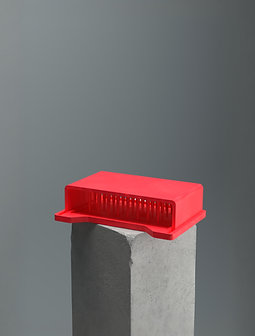1 day ago2 min read
3 days ago4 min read
5 days ago5 min read

Updated: May 5

Burn injuries are a global health challenge, requiring advanced research tools for better treatment outcomes. Researchers Mojtaba Javid and Dr. Fahimeh Tabatabaei have developed a 3D-printed tool to standardize burn wound creation in ex vivo skin models, addressing critical issues in burn research. Published in the Annals of 3D Printed Medicine, their innovation is poised to improve research accuracy and efficiency while reducing costs.
Traditional methods for creating burn wounds in research rely on manually heating metal rods or blocks and applying them to skin samples. These approaches are inconsistent, often resulting in variability in wound size, shape, and depth. Additionally, they are time-consuming, taking over 40 minutes to prepare 12 samples, and require significant user skill, further increasing variability in results.
To address these challenges, researchers designed a high-precision, 3D-printed device with two main components:
Plate-Base Component (PBC): A sturdy base that securely holds skin biopsies in standard 12-well plates.
Rod-Base Component (RBC): A customizable component equipped with steel rods to create consistent burn wounds across all samples simultaneously.
The tool was developed using Autodesk Inventor and printed with a AnkerMake 3D printer. The final design delivers uniform wounds for 12 samples in just 6–8 minutes, significantly reducing preparation time compared to traditional methods.

Cost-Effective: Producing the tool costs approximately $20, making it accessible to research labs worldwide.
Efficient: Cuts wound creation time by 70–80%, enabling higher experimental throughput.
Reliable: Ensures consistent wound size and shape across samples, reducing variability in research results.
Versatile: Compatible with standard 12-well plates and adaptable for other formats or specialized applications.
The researchers used PLA+ material for durability and strength, and stainless steel rods for precision burns. The design ensures uniform heat distribution and minimizes material usage.
The team plans to integrate advanced features, such as built-in heating elements and temperature sensors, for greater control and automation. A modular design could also allow researchers to customize the tool for different experiments, increasing its utility in various research settings.
Reproducible Burn Wounds: Essential for consistent and reliable burn wound studies.
Reduced Research Costs: Affordable for labs with limited resources.
Increased Efficiency: Accelerates the experimental process, freeing up researchers to focus on data analysis and innovation.
Sustainability in Research: 3D printing minimizes material waste and energy consumption.
By eliminating inconsistencies and reducing time and labor, this tool enables researchers to focus on developing innovative burn treatments and biomaterials. Adoption of such tools could accelerate discoveries that improve patient outcomes and shape the future of healthcare.
Mojtaba Javid and Fahimeh Tabatabaei’s innovative 3D printing solution redefines burn wound modeling, offering precision, cost-efficiency, and scalability. As labs worldwide embrace this technology, a new version of the tool is expected to drive breakthroughs in burn research and treatment development.
Stay Updated: For more insights on biomedical innovation Subscribe to our news letter. Share your thoughts below!

